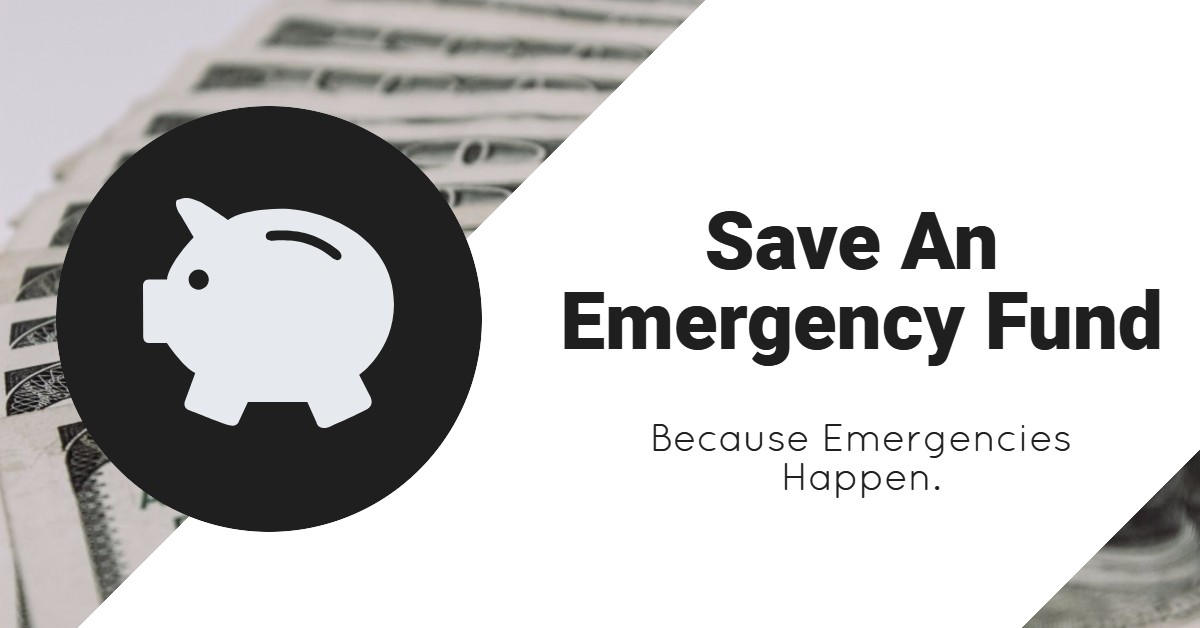
This article is part of the Beginner Investor Educational Series. To access other articles in this series, please take a look at the menu on the right side of this page (or at the bottom on mobile devices), or start here.
What is an Emergency Fund?
As the name implies, an emergency fund is specifically saved for an emergency. This could be due to many unforeseen circumstances, such as medical bills, a car malfunctioning, a pipe burst at home, etc. These can be very expensive bills that need to be paid in a relatively short time. Thus, your emergency fund needs to be (close to) immediately accessible. Another way to say this is that it needs to be liquid.
"Why does it only need to be close to immediately accessible?"
Because very few things are due immediately and only in cash. Most things can either be charged to a credit card, or are due when the service is completed. I am not suggesting you use a credit card as an emergency fund, since that would be taking on debt. Instead, you use the credit card as an interest free loan (for up to one month) while you gather the assets that you already have to pay off the balance in full. This gives you some time to gather the assets before the bill is due. That means, your emergency fund does not need to be completely in cash. I will go more in-depth into this later in the article.
"Do I really need an emergency fund?"
Do you really need health insurance, car insurance, or homeowners/renters insurance? Perhaps not, but insurance is there to protect you from financial hardship. That is exactly what an emergency fund does. If you experience an emergency and do not have an emergency fund, then you may be forced to take out loans, take on credit card debt, or sell assets that you otherwise had not planned to so that you can cover your bills. By saving for an emergency fund, you can cover for these events without having to alter your long term financial plan.
How Much Should You Save For An Emergency Fund?
Oftentimes, one of the worst financial situations one could encounter is the loss of a job with prolonged unemployment. You still have to continue to pay rent, mortgage, utilities, etc. for possibly many months, yet do not have a steady income coming in. Because of this, many financial advisors recommend keeping at least 3-6 months, some up to a year, of cash equal to your expenses. The amount you may need to save is dependent on your job security.
If you are a physician still in training, then your jobs are relatively secure. Residency programs have suddenly terminated before, but it is extremely rare. Because of this, you may be fine just saving enough for the lower end of the spectrum, such as 3 months.
As an attending physician, your job is less secure and if you have inflated your lifestyle, then it will be more challenging to maintain that if you suddenly lose your job. You do have the flexibility to work as a locum tenens, or moonlighting physician; however, there will still be a period of waiting for credentialing to be completed. For these reasons, I would recommend saving at least six months of expenses.
Where Should You Save Your Emergency Fund?
For beginners, the easiest place to put this is in a high yield online savings account that provides a modest interest rate. It is immediately accessible and will not be subject to market fluctuations. At the time of this writing, you can expect an interest rate of around 1.00 - 1.30% APY.
I try to minimize cash drag, so I generally do not recommend saving all of your emergency fund in cash. This could be a huge amount of cash potentially just sitting in your bank account, declining at a rate of 2-3% per year due to inflation. For more advanced investors, I would recomend an alternative way of optimizing your emergency fund that involves saving a portion of it in either a bond index fund or inflation protected fund and another portion of it in a large cap index fund. You can read more about this concept by clicking HERE.
To summarize the concept, I recommend against keeping 100% of your safety net in cash but, rather, that you keep 130% of your safety net in a moderate risk portfolio. This can be approximated by putting 40% of the total amount into an S&P 500 index fund and 60% into a total bond index fund.

